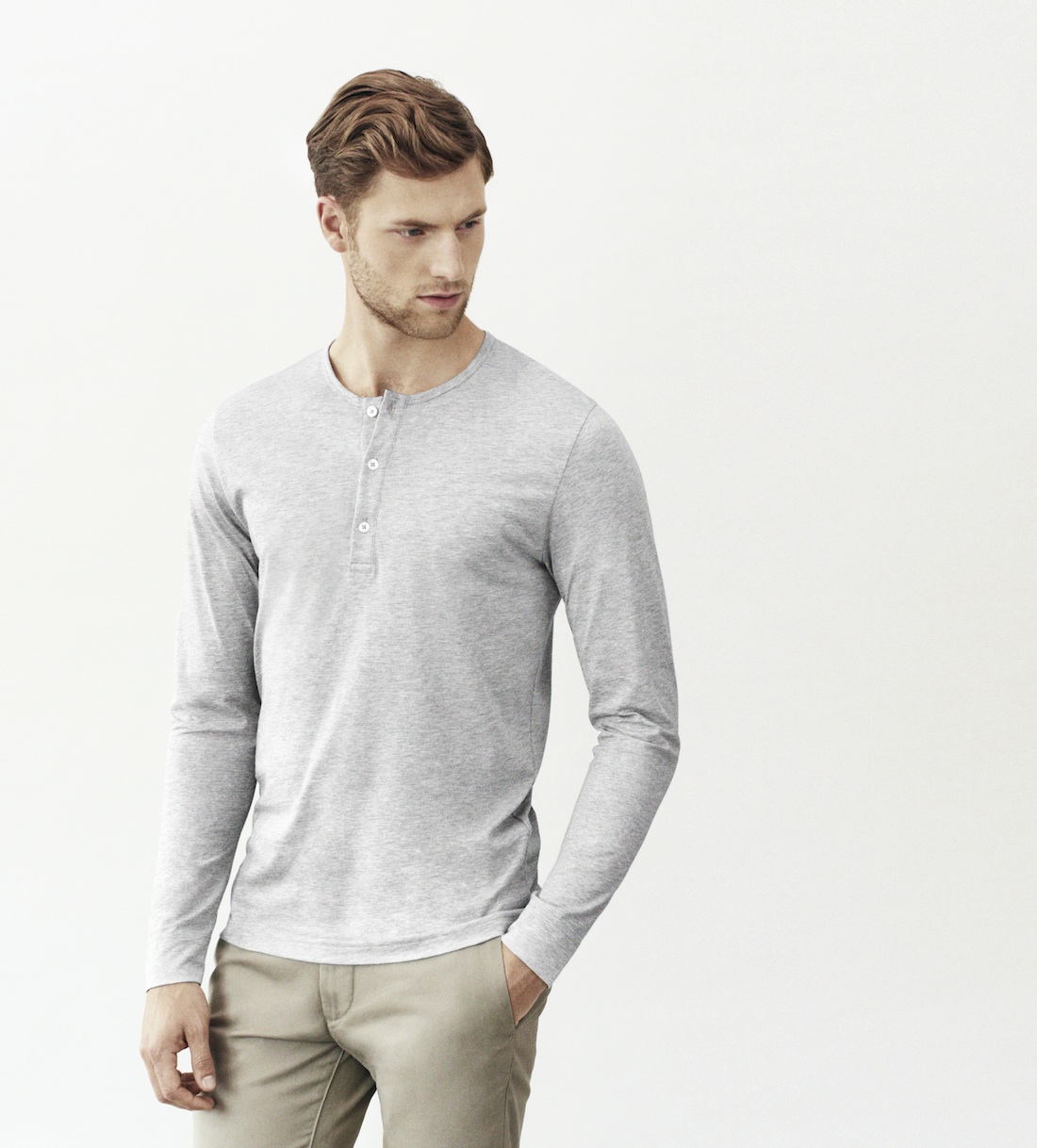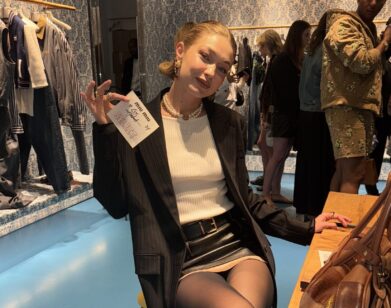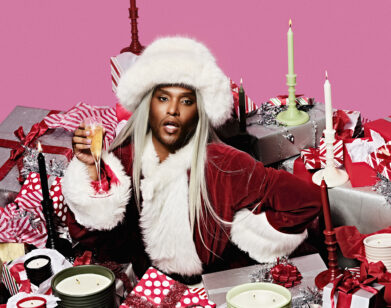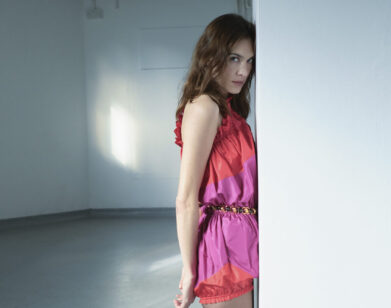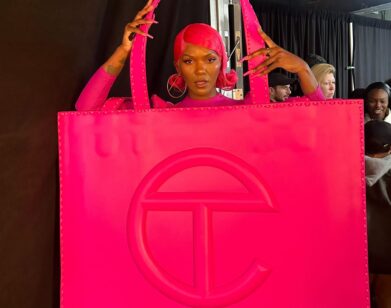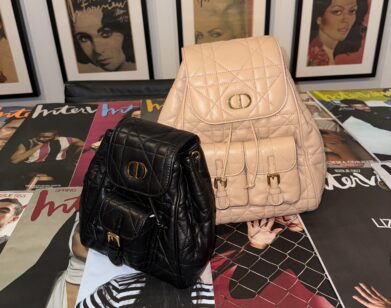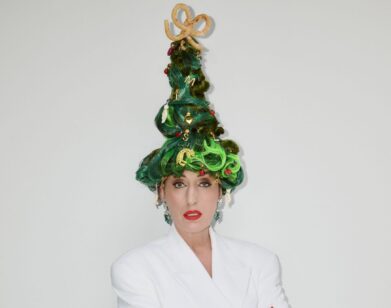Discovery: handvaerk
When we met Esteban Saba and Petra Brichnacova, the husband-and-wife co-founders of new clothing line handvaerk, the couple oozed effortless, Continental grace. Saba, in a pressed, white Oxford shirt, casually draped his arm around the back of the booth and the shoulders of Brichnacova, who wore no makeup and an equally simple gray cashmere sweater. There wasn’t a label in sight.
This precise aesthetic—the simplest of basics, designed perfectly, and in the most luxurious possible materials—is exactly what informs handvaerk, the product of Saba and Brichnacova’s business partnership. (Their romantic one began a few years ago, when Saba was so taken by the sight of Brichnacova on the street in Southampton that he literally stopped her in her tracks—again, an origin story entirely in keeping with the handvaerk “type.”)
Saba was a Merrill Lynch investment banker whose family had been involved in the textile business for many generations; Brichnacova was a Czech beauty who’d spent years working in the garment industry and managing an antique jewelry store; they were both the sort of people who could say with a straight face that they have a “passion for textiles.” A city-hall wedding and an LLC later, handvaerk was born out of their mutual interest in bringing a European approach to luxury basics: the absolute best white t-shirt, cashmere scarf, piqué polo, boxer brief; made of the absolute best materials, and designed with clean lines reminiscent of Danish midcentury modern furniture.
We talked to Saba and Brichnacova about handvaerk over coffee in Soho.
KNIT WITS: Esteban Saba: I grew up in a house where the knitting business was the day-to-day conversation. My mother has a very small business in California that does, sort of, you know St. John or Chanel suits for women? So she’s got a very sort of cottage industry type of that, custom-made stuff. She’s quasi-retired now, she’s in her mid-’70s. But she had been doing it for 30 years there, and at one point in the ’90s she was making stuff for Hollywood and even some Bond girls who were wearing that stuff. I always had a passion for it.
Petra Brichnacova: I studied at FIT, textiles and design. And also back home in Europe, I got formal training in textiles.
NOT YOUR AVERAGE…: Saba: There’s always a misconception about bankers and people who study fashion. We have a few very good friends, we have a very understated lifestyle, we like to wear very simple stuff, but we want it to be very good quality. We don’t like logos, we are very sort of…
Brichnacova: Minimal, Scandinavian, kind of European.
Saba: We love Margaret Howell, for example. We love the iconic British bands, like the Mackintosh raincoats. So when we set this out, our goal over the long term is to be thought of as a Mackintosh.
Brichnacova: Or Loro Piana.
Saba: Let’s be the Loro Piana of the cotton world.
COTTON TERROIR: Saba: Our extra-long cotton, we’re sourcing from one specific producer, which is in our opinion the best cotton. Because cotton is like a wine or Arabic coffee, there’s different rates of it. And the good thing about cotton is you can actually measure the best cotton by the fiber length, by how thin it is, by the fiber strength, by its luster. So it’s not something where it’s our opinion; we have labs, and we test all this good stuff.
THE NEW JERSEY: Saba: We start with a very thin, high-quality yarn, which is an 81—you can only make this 81 with a very fine cotton or else it breaks. Then we put the yarn on a gas flame to burn off the excess lint. Then with that 81 to make our jersey, we twist two separate yarns together to create an equivalent to a 41, which is a better weight for a t-shirt. And then we knit it to our specifications. It has no elastane or rubber in it but we structure our jersey in such a way where it gives where it needs to give but it also holds. Then we cut the product the way we thought it should be cut. It should be more tapered, not a slim fit but—the benefit about having a niche brand where you target a very specific consumer, I don’t have to make clothes for the lumberjack in Minnesota. I’m cutting my clothes for the fashion PR or the investment banker who lives in the city, in Boston, Chicago, or Berlin or Prague.
IF IT’S NOT A RIGHT ANGLE, IT’S A WRONG ANGLE: Saba: She’s open-minded about different styles, but I’m like, if it’s not clean and minimal… if there’s not a straight line in furniture, I can’t have it in the house.
Brichnacova: It’s a pain in the butt sometimes.
Saba: I had some couches that the end of the couches ended up in a rounded shape, not in a square, and I had to get rid of them.
LABELS OF LOVE: Brichnacova: We are perfectionists. For example, we couldn’t settle on the tags, so at the end we ended up producing in Japan, because theirs were the best. The softness—no one could produce it. It took us four months, the whole thing.
Saba: Ten different producers.
Brichnacova: But you have to do it right!
BICKER IT BETTER: Saba: We can’t believe we’re married, still.
Brichnacova: I guess it’s just two years, so…
Saba: [laughs] But it’s good-natured fights. We go back and forth. As a banker, I’m much more, “I like this because A, B, C and D.” And she’s like…
Brichnacova: I just go for it.
Saba: She looks at it and she’s like, “That’s the wrong color. And I can’t tell you why, but it’s the wrong color.” And then she’s right.
Brichnacova: And then I have to fight for my rights as well. But it’s good. It’s working, you know.
Saba: Eventually I’ll spin my wheels for three days and I’ll come back to her and go, “Okay, you were right.”
Brichnacova: It takes him time.
GROWTH: Saba: We only have 20 pieces, 10 for women, 10 for men, a little bit less than half of it is underwear. And only in three colors: black, white, and grey mélange because we wanted to make the statement of: don’t confuse us with a fashion tee company. We’re your structure basics. I think we’re going to continue to grow the core and make our mark on the basics, and then figure out once we have made our mark, where do we go from there. It’s a simple product, it’s not meant to be the highlight piece of your wardrobe but it’s supposed to complement the rest of your stuff.
Brichnacova: With the best materials out there.
Saba: We want to stay focused in only natural materials. You won’t see us make something that has elastane in the fabric or has synthetic in the fabric just because it has a beautiful sheen. We won’t go there. And some people will like us and some people won’t. And we think like the people that like us, and we don’t think like the people that don’t like us. [laughs]
FOR MORE ON HANDVAERK, VISIT ITS WEBSITE.

